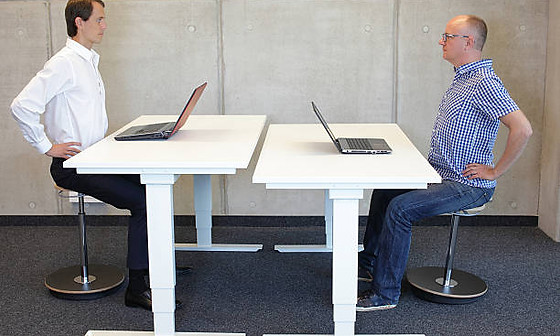
How to Improve Posture at Work: Expert Tips for a Healthier Workspace

Published: April 24, 2025
Proper posture is more than just about how you sit —it's a cornerstone of long-term workplace wellness. At Pillar Ergonomics, we help individuals and businesses across Canada create workspaces that support musculoskeletal health and reduce the risk of chronic discomfort or injury.
Why Posture Matters
Sustained poor posture leads to conditions like back pain, neck stiffness, and carpal tunnel syndrome. By optimizing workstation ergonomics and movement habits, workers can reduce fatigue and boost productivity.
Key Posture Tips
-
Neutral Spine Alignment: Your back should rest naturally against your chair’s seat back and lumbar support.
-
Recline against the seat back: Slightly reclining against the seat back reduces the compressive load on the joints and discs in your spine and reduces dependency on the postural muscles in your back. Sitting upright for long periods of time is difficult!
-
Work surface height: The work surface - desk or keyboard tray - should be positioned at a height whereby your elbows are comfortably at your sides and at an angle of 90-100 degrees. Forearms should be parallel to the floor. Wrists should be in neutral. You should be able to sit reclined in your chair and position the work surface close to the lap and body so that minimal reaching or sitting forward is required.
-
Screen at Eye Level: Looking down at a laptop can strain the neck—use a monitor riser if necessary.
-
90-Degree Rule: Elbows, hips, and knees should each be at approximately 90 degrees or greater when working.
-
Micro-Movements: Integrate standing and movement into your day to promote circulation.
At Pillar Ergonomics, our experts evaluate your workspace and give custom recommendations to reduce risk and enhance comfort.
Further Reading:
Learn more about improving posture at work from Total Wellness.
